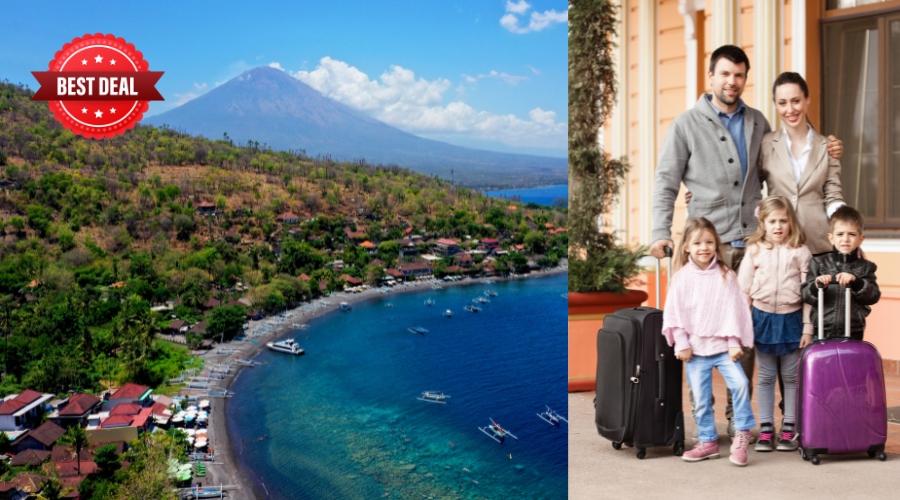Take it slow and go. There’s Still Time

When I go alone, I behave considerably differently than when I give myself more time. I normally leave so quickly for the airport that I can board the plane in 2 or 3 minutes after passing security and making my way to my gate. If you’re traveling with children, this is absolutely not the way to go.
When traveling with your family, everything takes longer than you expect, including:
- Arriving at the airport and signing in
After passing through airport security, purchase food and beverages - boarding the plane
- Make sure to arrive at the airport early and leave plenty of time in case something goes wrong.
You don’t want to be late for your flight because getting your bottles and stroller through security took longer than intended. When your flight is delayed, you and your children are detained at the airport. That is not fun, believe me!
However, flying is simply one example of doing things slowly. Allowing additional time for each part of your journey is a smart idea.
Bring only what you need
Families have a habit of bringing everything their children use at home with them. You can ensure that your routines remain constant and that you have all you need by carrying familiar objects.
Families have a tendency of transporting everything their children utilize at home. Carrying familiar things ensures that your routines remain consistent and that you have all you need.
Bring the smallest amount possible. Traveling will disrupt your usual habits in and of itself, so attempting to keep them all would be futile. It will just cause discomfort and stiff arms.
Describe the journey.
It’s crucial to familiarize youngsters to the trip in advance for first-time tourists.
Children may understand their situations at each point of the travel better if the itinerary and what will happen are discussed. They will feel more at ease since they will know what to anticipate coming up.
One method to describe the journey is to explain what to expect at the airport, on the plane, and when they arrive at your place. Use this opportunity to discuss your expectations regarding their behavior during the vacation. Give guidelines for behavior on flights, at lodgings, and on trips.
Always bring extra snacks
A wonderful family trip may quickly turn into a terrible one if the kids are hungry. I just can’t emphasize this enough. Children who are hungry might be the difference between a happy household and one with grumpy kids.
Always have food on hand for your children!
You can never tell when the interval between meals will be lengthened. It might be a delayed or canceled flight, unexpected traffic on the approach to your lodging, or an extended tour.
It’s probable that the cuisine will be very different from what your kids are used to when you get to your destination. Because it wasn’t what they were expecting, they could be content to order lunch and then nibble on it. A few hours later, when you’re visiting a museum in the afternoon, you’ll have to feed a hungry child.
Keep an eye on your child.
It may seem obvious to keep track of your child, but it is important enough to mention. No matter what you’re doing, whether things are going well or if you’re experiencing a logistical nightmare, you should always be aware of where your children are.
You’d be surprised at how quickly you can get sucked into something as basic as buying railway tickets in a foreign tongue. The next thing you know, your kid is looking at candy bars at the little shop at the railway station. You could get a panic attack if the candy bars are on the opposite side of a shelf from where you can’t see your youngster.
If you are traveling with another adult or parent, divide the duties. While the other person watches the kids, one person buys the tickets. Make sure the kids are always visible if you’re going alone with them. If necessary, hold their hands or ask them to sit so you can see them.
Even the most diligent parents occasionally lose sight of their kids. If your youngster has a tendency to wander off, you might want to use a tiny GPS tracker that you can attach to their shoes or belt. The tracker will alert you if our child goes too far and give you the opportunity to find them and find out where they went.
Give Kids Your Contact Information
In the unlikely event that a child becomes lost despite your best efforts, you’ll want them to have your contact information.
Your contact information should contain the following details for each adult traveling with you so that you have numerous possibilities to get assistance in locating your kid.
Name
Phone Number
Contact information via email
Address in the neighborhood
A note in one of their pockets is the greatest approach for young children to give contact information. If they don’t have pockets, tuck a small card into their belt loop or into their shoe. Don’t be scared to use your imagination, but make sure your child knows where to look for it.
Help older kids memorize your phone number and email address. If they need the local address where you are staying, write it down for them or have them put the information on their phones. We all know a teenager isn’t going to go very far without his or her phone.
Travel With Basic Medicines
Having a sick family member is one of the simplest ways to spoil a day of travel, or even a whole trip. If everyone in the family becomes ill, it might grow even worse. You want to be ready to help the ill family member feel better as soon as possible, whether they have an upset stomach from the choppy bus journey to your location or you discover a new type of tree pollen you are allergic to..
Take a few over-the-counter medications that your family could require while traveling. Among the over-the-counter medicines are:
- Headache medicines
- Allergy medicines
- Medicine for upset stomachs
- Motion sickness prevention medication
- Other medication that might apply to your family or the specific trip
Bring any prescription medicine that any member of your family may be taking with you. Take your medications, especially those that are prescribed to you, in their original containers whenever feasible. To prove exactly what your prescription is and why you have it for border crossings and if your luggage is examined, take a duplicate of the prescription from your doctor if you are unable to bring the original package.
Check the rules for your location before you travel to be sure you may bring your drugs in without having to fill out any extra paperwork or obtain special authorization.



